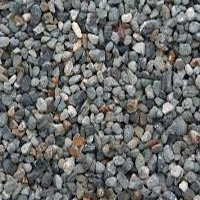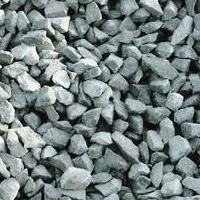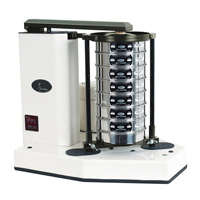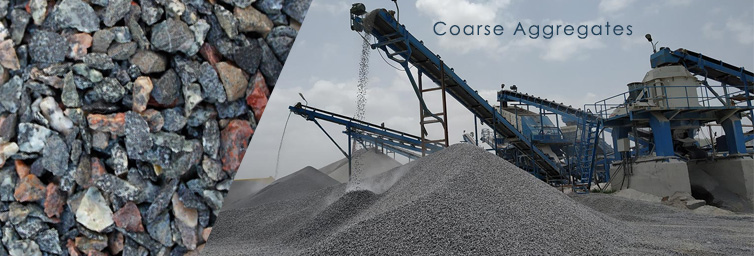You have no items in your shopping cart.
Post Requirement
Coarse aggregates are irregular broken stone or naturally-occurring rounded gravel used for making concrete. Materials which are large to be retained on 4.7 mm sieve size are called coarse aggregates, and its maximum size can be up to 63 mm.
Coarse aggregates are generally obtained by blasting in stone quarries or by breaking them by hand or by crushers. Machine - crushed stones consist of stones of various sizes whereas Hand - broken aggregates consist of only single size stones. To produce graded aggregates for high-class concrete, they are again mixed in specific proportions.

They should be washed well before using in concrete. Coarse aggregates for structural concrete consist of broken stones of hard rock like granite and limestone (angular aggregates) or river gravels (rounded aggregates). For non-structural mass concrete of low strength, broken bricks, foamed slag, clinker, etc., may be also used as coarse aggregates.
Foreign materials in coarse aggregates such as coal, lignite, soft fragments and clay lumps should not exceed 5 per cent of its weight.
Maximum Size of Aggregate for Various Works
- For Non-reinforced work, maximum size should be from 40 to 75 mm (1.5 to 3 inch).
- For R.C. Foundation work, maximum size should be from 40 mm (1.5 inches).
- For R.C. work (beams, columns, slabs in buildings), maximum size should be from 20 mm (3/4 inch).
- For Shell roof and thin members, maximum size should be from 10 mm (3/8 inch).
Storing of Aggregates
Aggregates should be stored and handled carefully to avoid contamination from dirt. They should also not be segregated, and their moisture content should remain relatively constant.
The selected site should be a clean dry and hard patch of ground, keeping in view the position of the mixer and the convenience in handling. If a good place is not available, then an artificial platform shall be prepared out of planks, galvanized iron sheets, bricks or lean concrete.

Fine aggregates and different sizes of coarse aggregates must be stored in separate blocks.
To prevent segregation, successive consignments should not be dropped on the older piles to form a pyramid. In order to avoid excessive variation in moisture content, each pile of aggregates must be stored in a large area but low in height not exceeding 1 m.
They shall be allowed to stand for at least one day before use. Conical blocks must be avoided as they assist segregation.
Testing of Aggregates
The routine and other tests usually prescribed on coarse aggregates are as follows:
Test for particle size: This test is carried out in the field by sieve analysis.
Test for shape: According to the shape, aggregates are classified as below:
- Rounded
- Irregular or partly-rounded
- Angular
- Flaky
The shape of aggregates becomes important in case of high strength or high-performance concrete where low water-cement ratios are to be considered. Mostly, cubical-shaped aggregates are preferred for better workability.

Test for elongation index (flakiness): The laboratory test for shape is called a test for flakiness or elongation index. For this test, a sufficient quantity of sample should be taken so that the minimum number of 200 pieces of any standard size fraction is to be tested. This test is not used for aggregates sizes smaller than 6.3 mm.
Test for impurities: The percentage fines and the clay content can be found by immersing the aggregate in water and examining the suspended particles in the water.
Test for Moisture Content: The drying method in an oven or heating in an open pan in the field are the easy tests to be carried out. This can also be done by pouring an inflammable liquid like methylated spirit and lighting it to evaporate the water.
Very good coarse aggregates are necessary for durable concrete construction in buildings and also in road works. In our country, IS 383 and IS 2386 deal with the requirements of coarse aggregates for concrete.
Vani Paspula
Darmaseelan
posted on Feb 26, 2021 10:29:35 AMBapi Bala
posted on Nov 9, 2020 11:04:15 AM













hawi fayera
posted on Jun 14, 2021 9:37:54 AM